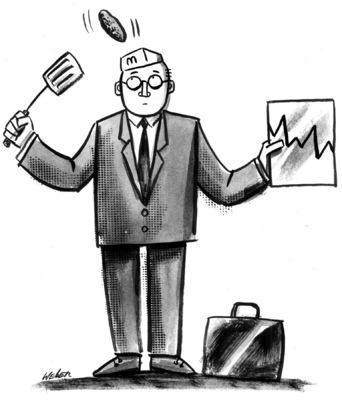- MENU
- HOME
- SEARCH
- VIDEOS
- WORLD
- MAIN
- AFRICA
- ASIA
- BALKANS
- EUROPE
- LATIN AMERICA
- MIDDLE EAST
- United Kingdom
- United States
- Argentina
- Australia
- Austria
- Benelux
- Brazil
- Canada
- China
- France
- Germany
- Greece
- Hungary
- India
- Indonesia
- Ireland
- Israel
- Italy
- Japan
- Korea
- Mexico
- New Zealand
- Pakistan
- Philippines
- Poland
- Russia
- South Africa
- Spain
- Taiwan
- Turkey
- USA
- BUSINESS
- WEALTH
- STOCKS
- TECH
- HEALTH
- LIFESTYLE
- ENTERTAINMENT
- SPORTS
- RSS
- iHaveNet.com: Economy
by Amanda Ruggeri

The increase keeps the country on track to hit 10 percent unemployment by year's end
The Labor Department's job report this morning may not be surprising, but it's still disappointing: The unemployment rate rose in June to 9.5 percent, making it the worst in 26 years.
The rise, from 9.4 percent in May, is slight.
Still, it keeps the economy on track to hit a 10 percent unemployment level by the end of the year, as analysts have predicted. And at 467,000, the number of jobs shed in June was much worse than the 350,000 that economists had forecast.
In total, 14.7 million Americans are looking for work--almost twice the number when the recession began in December 2007.
The news isn't good for the Obama administration, which lobbied for the $787 billion stimulus package based on the idea that it would create millions of jobs.
The White House says there are more jobs in the economy than there would have been without the legislation. But that explanation isn't convincing the public, only 52 percent of whom now say the stimulus has or will restore the economy, according to one recent poll.
As usual, the numbers would have been even worse if it weren't for the
If jobless individuals haven't "actively" sought jobs in the past four weeks, such as by submitting applications or attending interviews, they're not included in the tally. Also excluded are those who would like full-time jobs but can find only part-time work.
The unemployment rate would be 16.5 percent if those individuals were included.
The data also show that some industries are much worse off than others.
The hardest-hit are construction workers, more than 17 percent of whom are unemployed. That's more than twice their unemployment rate one year ago. Meanwhile, those involved in mining, quarrying, and oil and gas extraction are facing a 13.6 percent unemployment rate, more than four times the 3.3 percent they saw last year.
Even education and healthcare -- which together saw growth in June, adding 34,000 jobs -- have a 6.1 percent unemployment rate.
While it's daunting, the unemployment rate isn't necessarily a clear sign of how the economy is doing as a whole.
That's because it's a lagging indicator: Businesses can't hire (or even retain) their workers until they have the money to do so, which comes about when the credit markets loosen up and when consumers start spending again.
The good news, therefore, is that the unemployment rate doesn't automatically mean the economy's not stabilizing. The bad news? Even once the country emerges from recession, it's likely that the unemployment rate will continue to slump.
© U.S. News & World Report
WORLD | AFRICA | ASIA | EUROPE | LATIN AMERICA | MIDDLE EAST | UNITED STATES | ECONOMY | EDUCATION | ENVIRONMENT | FOREIGN POLICY | POLITICS
Unemployment Reaches 9.5 Percent, Highest in 26 Years